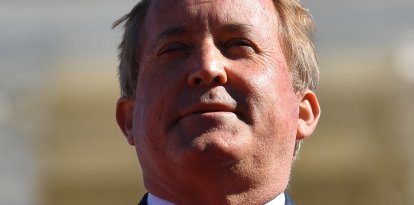Trump seeks $163 billion cut in federal spending to prioritize defense and border
The White House proposes a significant reduction in funding for civilian agencies and social programs.

President Donald Trump at the White House.
The Trump Administration presented a budget proposalthat seeks to reduce by $163.billion in federal spending for next year, with a focus on strengthening defense and border security, and a significant reduction in funding for civilian agencies and social programs.
The proposal contemplates a nearly 65% increase in spending related to homeland security over approved 2025 levels, as part of a strategy that strengthens border control and the fight against illegal immigration. In contrast, non-defense discretionary spending-which excludes programs such as Social Security and Medicare-would be cut by 23%, placing it at the lowest level since 2017.
Focus on strategic priorities.
The budget submitted bythe Office of Management and Budget (OMB) envisions a reallocation of funds that includes a reduction of more than $2 billion to the Internal Revenue Service (IRS), as well as significant adjustments to the National Institutes of Health and the Centers for Disease Control and Prevention (CDC), with cuts of more than 40%.
According to the Administration, this approach reflects a shift toward a more efficient government, prioritizing security and reducing the size of the federal apparatus. "At this critical moment, we need a historic budget -- one that ends the funding of our decline, puts Americans first, and delivers unprecedented support to our military and homeland security,," said OMB Director Russ Vought.
Agency reorganization and bureaucracy reduction.
The proposal includes a $50 billion cut to the State Department, accompanied by the absorption ofthe U.S. Agency for International Development(USAID). Also contemplated is a 15% reduction in the Department of Education's budget, aligned with Trump's promises to profoundly reform this institution.
Other budget adjustments include a nearly 50% decrease in funding for the Department of Housing and Urban Development, and cuts to NASA's lunar exploration programs and federal agencies such as the FBI and the Bureau of Alcohol, Tobacco, Firearms and Explosives.
On the fiscal front, the White House raises the extension of the tax cuts approved in 2017, a measure that - according to analysts - could have an impact on the deficit, but is seen by the Trump team as key to fostering economic growth.
Border security as the centerpiece
The proposal allocates an additional $500 million in discretionary spending toenforce the border, support deportation operations and improve security technology infrastructure. It also allocates funds to maintain 22,000 border patrol agents and hire new officers for Customs and Border Protection.
Republicans in Congress are already working on legislation that would build on this proposal. While it is customary for Congress to make substantial modifications, Trump maintains strong influence among his legislative allies, which could facilitate passage of several key points of the plan.
The Administration is also preparing an additional package to formalize cuts made through the Department of Government Efficiency, as part of a process that has been requested by Republican senators to ensure greater transparency in the use of funds approved by Congress.



























